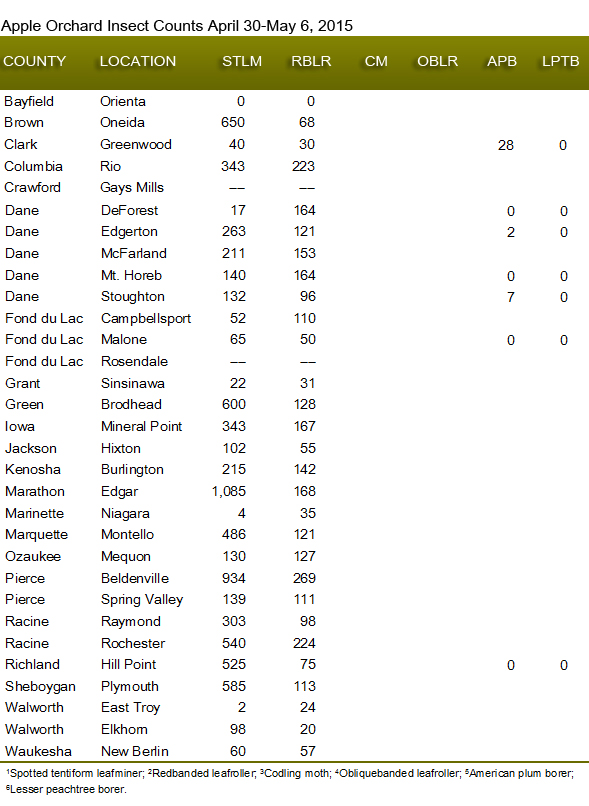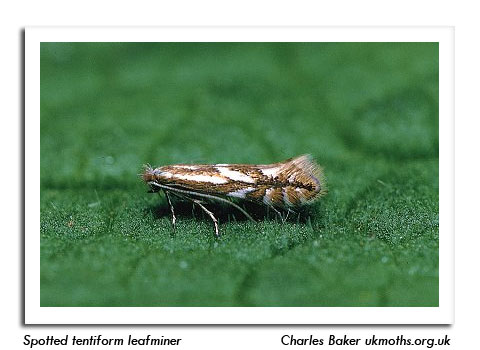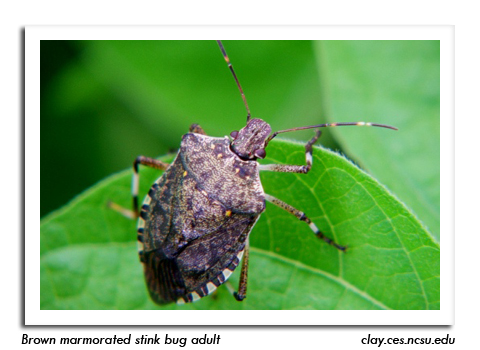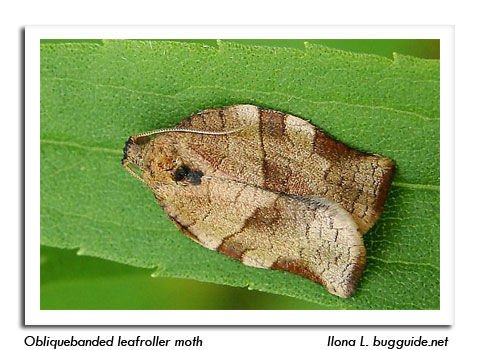
 |
|
|
Fruits
Volume 60 Number 19 Date 08/27/2015 SPOTTED TENTIFORM LEAFMINER - The third and last flight of the season has declined to low levels at most orchards. Trap counts ranged from 0-361 moths from August 20-26, with the high count registered at Montello in Marquette County. Moth activity should subside by mid-September. BROWN MARMORATED STINK BUG - Fruit growers are advised to watch for this pest next month and in October as the bugs swarm on warm fall days. Brown marmorated stink bug is thought to be established at very low levels in Dane and Jefferson counties, although it has never been detected in any fruit, vegetable or field crop anywhere in the state. Similar to the multicolored Asian lady beetle and boxelder bug, BMSB aggregates on the exteriors of buildings in autumn in search of protected, overwintering sites. Any swarms of stink bugs noticed this fall should be reported to DATCP at 1-866-440-7523. APPLE MAGGOT - Damage in the form of external depressions and brown, internal larval tunnels is appearing on apples in orchard blocks where earlier controls were unsuccessful. Peak emergence of flies occurred one to two weeks ago depending upon the area of the state, and activity has generally declined. The high count for the week was 12 flies on an unbaited red sphere trap at Deerfield in Dane County. OBLIQUEBANDED LEAFROLLER - Orchardists are reminded to maintain pheromone traps for this insect throughout September. Second generation larvae occasionally cause severe fruit damage late in the growing season and moth counts in late August and September can be an indication of damage potential by first brood larvae next spring. CODLING MOTH - Moderate to large flights were registered in a few orchard locations in the past week, indicating that codling moth pressure has not diminished in all areas. Economic counts of 8-37 moths per trap were reported from Deerfield, Mequon, Mineral Point and Rochester. Pheromone trap checks may be discontinued once 1,700 degree days (modified base 50°F) have accumulated from the first biofix, at which time approximately 90% of second-flight adults will have emerged. -- Krista Hamilton, DATCP Entomologist 




|
|
|